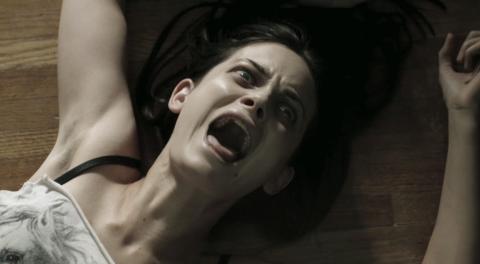What Makes a Good Horror Film: The "Jump" Moment
May 30,2015
Arousal is sometimes mistaken for fear because the two often go hand in hand, but arousal is the physiological response to what is occurring in a horror film (a “jump”), while the fear is what may linger even after the film is over. I propose that there are four elements that make up a “jump-filled horror film: emotion, sympathetic characters, and proximity to death.
Sympathetic Characters (Deliver Us From Evil (2014))
I would argue that this is the first most important element in horror films because we as an audience have to care about the characters’ well being in order to be engaged in the film, and we have to understand the characters emotionally, but not literally. Nonetheless, the characters have to be complex enough that we can understand why they act morally as well as unethically and idiotically. Then, we can begin to care about what happens to them.
In Deliver Us From Evil, the main character has to see many gruesome images from detective work and ends up lashing out at his family, shutting out the people who want to help him. When he lets the audience in to his darkest secrets, however, we can sympathize with him and understand why he acts the way that he does.
Emotion (Dark Touch (2013))
Emotion has to be a factor in horror films because fear taps into our amygdalas: the emotion and motivation centers of our brains. However great the effect of fear may be, a film affects us more deeply when there is a high level of arousal. I find that a horror film is most effective at eliciting arousal through a variety of emotions, especially together. An emotion elicitation study found that Misery elicited the highest arousal out of the clips used, more specifically the scene in which a character breaks the legs of another (Jenkins & Andrewes, 2012). This clip might have elicited fear as well as disgust, anger, and discomfort, which may be why it was so effective.
There is a scene in Dark Touch, a Scottish film, in which a girl’s abusive parents are killed indirectly by her own hand. This scene is particularly emotional because of our sense of justice and satisfaction that the parents are getting what they deserve, our sense of horror at the execution of the murder, and our sense of compassion for the girl, who does not understand what she is doing.
Proximity to Death (Martyrs (2008))
The element that ties both of the above elements together is proximity to death. Torture and pain in films is only effective if we believe that the character is mortal and vulnerable to death. Thus, in action films we may not be as emotional when the hero is caught because it is standard for him to stay alive at least until he completes the mission. In horror films, however, we are under the impression that anyone can die, even the seemingly immortal villain. Therefore, we care about the characters’ survival if they elicit our sympathy, and their harm or capture elicits emotions in us, which causes arousal and in turn, a “jump” in response to what is happening on screen.
The entire theme of death and torture surrounds the French film Martyrs. More specifically, the ghost that appears in the orphanage reminds the audience of the main character’s near-death experience and impending death, as the ghost is mutilated in ways that would not leave us questioning whether or not it is still alive.
References
Jenkins, L. M., & Andrewes, D. G. (2012). A New Set of Standardised Verbal and Non-verbal Contemporary Film Stimuli for the Elicitation of Emotions. Brain Impairment, 13(02), 212-227.
Image credits: IFC Midnight (The Pact 2012)






